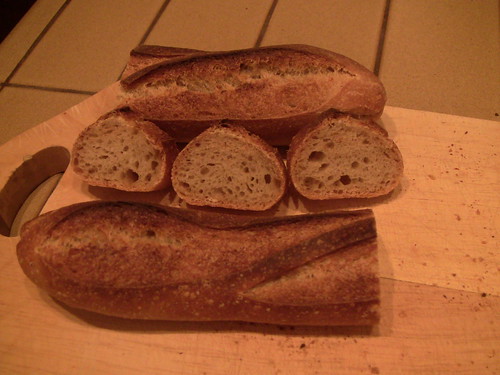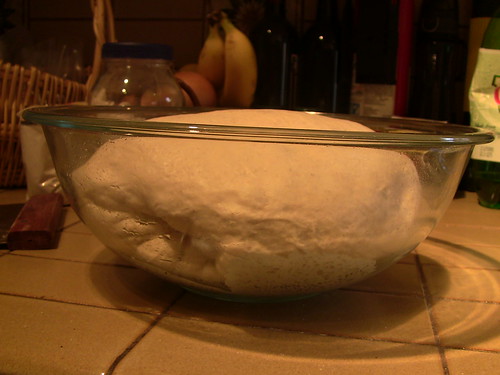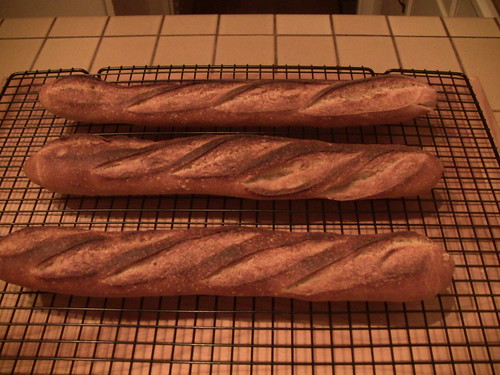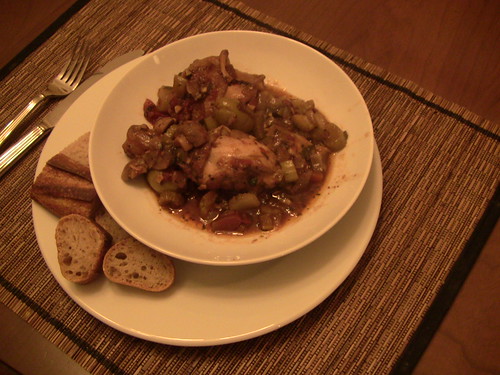
Last week I made San Francisco Sourdough, and learned a lot. I decided to try it again this weekend with some variations relating to flour mix, dough handling, retardation time and loaf shape.
I again used the formula in Peter Reinhart’s Crust and Crumb, and I again used primarily Bob’s Red Mill bread flour. But this time, instead of 100% bread flour I used about 9% dark rye flour and about 11% whole wheat flour. I used the rye and whole wheat in each of the three mixes: the liquid starter, the firm starter and the main dough. I did not adjust the hydration (64%).
My other departures from the C&C formula were:
- Though the formula calls for kneading the dough, then letting it sit unmolested in a bowl for four hours, I gave it a four-way letterfold every hour. The dough was firmer (less slack) this time, compared to last weekend when I did no folds.
- I followed the formula’s specifications for ripening and then retarding the two starters, but I decided to test the effects of retardation after proofing and to test the attributes of different loaf shapes using this formula. I scaled the dough for 3 mini-baguettes of 250 grams each and a boule and a batard of 615 grams each. The baguettes I baked as soon as they were proofed; the larger loaves were put in the fridge overnight after proofing 3 hours as in the formula.
I should also mention that I proofed the baguettes and the batard on linen couche, and the boule in a linen-lined basket. I did not spray oil on the loaves at the beginning of proofing as Reinhart specifies. The baguettes were covered with a fold of couche fabric and a tea towel over that.
Here’s the fermented dough after a 3 ½ hour rise.

Here’s the proofing loaves.

The baguettes baked at 450 on a stone with steam for 10 minutes, then without steam at the same temperature for another 10 minutes. Then I left them to sit on the stone with the oven off and the door ajar for another 10 minutes. The internal temperature was 209F. They’re really pretty to look at.


The crust is darkish, and very hard. Indeed, it is positively tough, as in hard to bite through.
The crumb is very good tasting and nicely chewy, not what I’d call tough. Not a very open crumb, but not really dense.
It was a really good thing I had delicious Chicken Cacciatore to dip the bread in to moisten it (the bread made a fine mop). Thanks for the recipe, David.

So, you experienced bakers, what caused the rock hard crust this time?
- · Increased gluten strength from the folds during ferment?
- · Baguette shaping?
- · Baguettes getting too much air (not sealed in plastic) during proofing?
- · Too low hydration?
- · Too bold a bake or too much time drying on the stone?
Any help would be appreciated. The boule and batard just came out of the oven, and I’ll report results later.
Thanks.
Glenn




